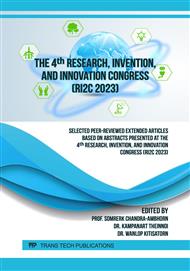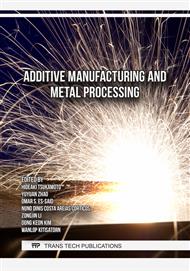p.65
p.73
p.79
p.87
p.93
p.101
p.107
p.115
p.123
Fracture Prediction of Aluminum Alloy Sheet AA2024-T3 Using Analytical Stress and Experimental Strain Based Failure Criteria
Abstract:
In this work, the fracture prediction of aluminium alloy sheet, grade AA2024-T3 was investigated using the Fracture Forming Limit Curve (FFLC) and Analytical Fracture Forming Limit Stress Curve (FFLSC) as failure criteria. Initially, the FFLC was experimentally achieved by means of the Nakajima Stretch forming test coupled with GOM strain measurement system, providing the Digital Image Correlation (DIC) technique. Subsequently, the analytical FFLSC was plastically computed using experimental FFLC data combination with Swift hardening model and anisotropic Hill’48 yield model for representing anisotropic plastic deformation behaviour on examined sheet. Finally, Fukui stretch drawing and Three point bending tests were conducted both experiment and numerical simulation to evaluate the fracture state and verifying an applicability of obtained FFLC and FFLSC. In the simulation, the ABAQUS 2017 element deletion function was employed for directly implementing the fracture criteria regarding the FFLC and FFLSC. It was concluded that the analytical FFLSC could more realistically predict fracture behaviour better than the FFLC based on strain. In term of percentage error, the analytical FFLSC generated an error less than the FFLC.
Info:
Periodical:
Pages:
123-129
Citation:
Online since:
December 2023
Authors:
Price:
Сopyright:
© 2023 Trans Tech Publications Ltd. All Rights Reserved
Share:
Citation:



